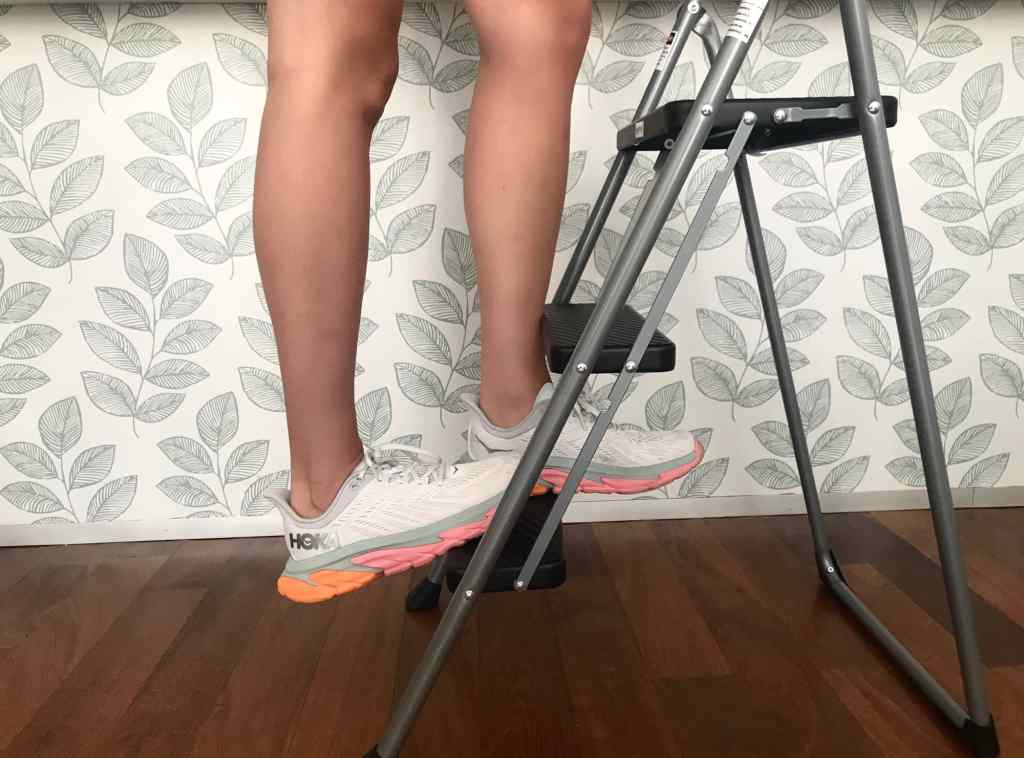
- POPSUGAR Australia
- Fitness
- 3 Expert-Backed Stretches For Runners Dealing With Achilles Tendonitis
3 Expert-Backed Stretches For Runners Dealing With Achilles Tendonitis

It’s easy to simply focus on putting one foot in front of the other when you’re running – it becomes meditative, where you’re so locked in on the task at hand. But being in the zone shouldn’t hinder you from staying aware of your body’s cues.
Let’s say you’re out on a jog when a sharp pain above your heel bone strikes. Then, a dull ache in the calf muscle follows. According to Amanda Olson, DPT, and RRCA-certified running coach, your body could be communicating that you have a case of Achilles tendonitis.
“Achilles tendonitis is a common inflammatory injury of the Achilles tendon, which is a long and thick tendon that attaches the calf muscles to the foot’s heel,” she explains.
Other symptoms Olson suggests looking out for are the presence of bone spurs at the heel with longer-standing Achilles issues, throbbing sensations in the calf muscle, or a feeling of weakness during the push-off phase of running.
Make sure to listen up – these signs could be the body warning you that your running form needs improving, your feet or glutes are too weak, or you’re wearing ill-fitting shoes.
“Often, a runner with weak gluteal muscles and poor foot muscle strength will use compensatory running patterns that create irritation and inflammation of the Achilles tendon in conjunction with overuse of the calf muscles. Improper fitting shoes and shoes that are too stiff can also create running form issues that lend to Achilles tendonitis,” Olson says.
Achilles tendonitis pain could subjectively limit a runner from exercising – but there’s good news, too. If the discomfort isn’t inhibiting your ability to run, it’s often OK to continue training as long as you address the driver of your condition with a doctor and get medical approval.
With a professional’s guidance, you can build foot and hip strength to promote correct gait mechanics. Wearing proper footwear (preferably sole-flexible shoes that allow for adequate propulsion forward!), and icing your injury can also help, Olson explains.
If you don’t talk to a doctor at the first signs of Achilles tendonitis, know that the condition can become chronic, ongoing, and can sometimes affect your walking comfort.
According to Mayo Clinic, Achilles tendonitis can weaken the tendon, which puts you at a higher risk of a tear (which can require surgical repair) if not taken care of properly.
So, call your doctor – we’ll wait. Once cleared, start your road to recovery with Olson’s stretches for aiding Achilles tendonitis below. And remember: listen to your body and stop if you feel pain.
Related: Runners, Follow These Tips to Prevent Achilles Tendonitis
Stair Calf Stretch
- Stand with both feet on a curb or stair with your right heel exposed off the edge of the step and your left foot entirely supported on the ledge.
- Bend the left knee slightly but keep the right leg straight as you allow the right heel to drop down toward the ground for a calf stretch. Hold for 30 seconds.
- Repeat on the other side and alternate sides until you’ve stretched both legs three times.
Wall Calf Stretch
- Stand facing the wall in a lunge position with the right leg straight back and the left leg slightly bent forward. Your hands should be pressing into the wall for support.
- Add more bend in your left knee until you feel a stretch in the right leg – hold for 30 seconds.
- Repeat on the other side and alternate sides until you’ve stretched both legs three times.
Ankle stretch
- To improve your overall ankle flexibility, mobility, and strength, sit in a chair and trace each letter of the alphabet with your right toe guiding you as your right ankle follows the motions.
- Switch and repeat on the other side.
Click here for more health and wellness stories, tips, and news.




